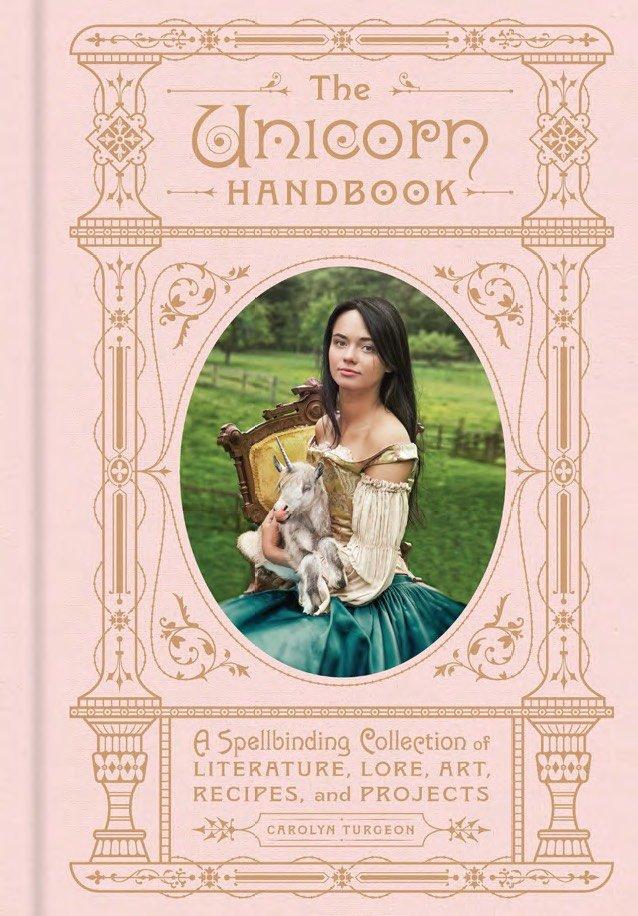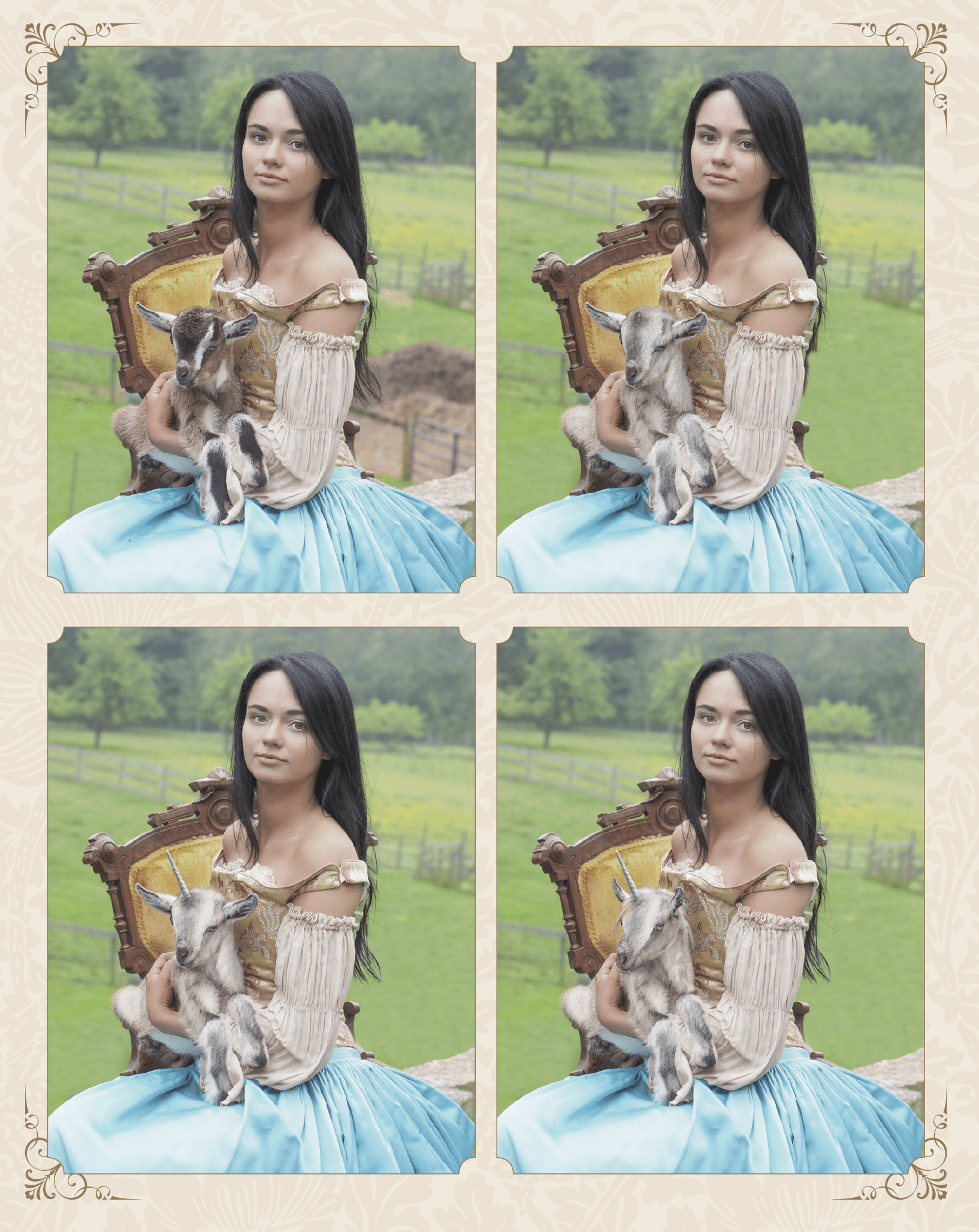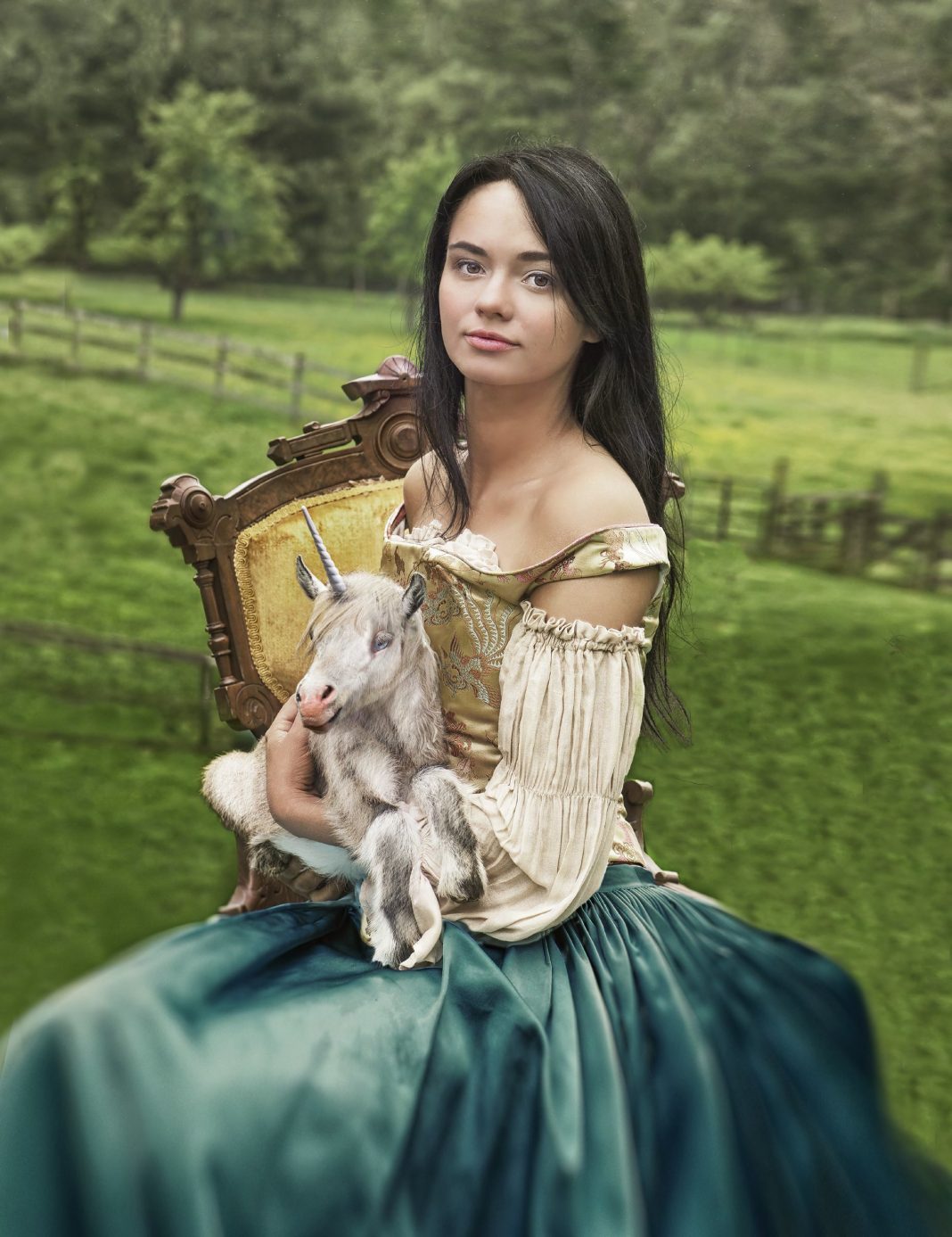
Rona Berg: Why did you decide to tackle unicorns next, after fairies and mermaids?
Carolyn Turgeon: My editor and I contemplated other creatures (who may or may not be the subject of future handbooks), but I was really excited to delve into unicorns for this third book in the Enchanted Library series. To me, fairies and mermaids and unicorns make the perfect magical trio, all three having inspired obsessions and myths and lore all over the world, pretty much in every place and in every era. And all three have their deep, dark traditional lore and their modern kitschy counterparts—a contrast I find especially fascinating. I mean, look at the Lady and the Unicorn, the unicorns of Leonardo, or the countless images of the sacred hunt, where the unicorn becomes a Christ figure symbolizing purity and suffering and unspeakable beauty. It’s such a stunning contrast to your sparkly unicorn cupcakes and bedroom slippers and eyeshadows—that rainbow kitsch you can find everywhere now. So I’m pretty excited to have a whole magical set now with this third book, featuring so many of the writers and artists we see in Enchanted Living.
RB: If you had to describe the source of the unicorn’s pull and power, what would it be?
CT: I think there are a lot of answers to this question, but in this issue devoted to magical beasts of all kinds, I’d have to say that the unicorn is about as magical and wonderful a beast as you can imagine, with its beautiful glimmering horn that can purify water and heal those who are ill, its extreme rarity, the idea that only a virgin can tame him. I mean who doesn’t love the bad boy who has a soft spot only for you? The unicorn is wild and ferocious and magic and not of this world, but he’ll bow before a virgin and fall asleep in her lap. Personally, some of the most enchanted moments of my life involved encounters with wild beasts: seeing humpback whales bubble-net feeding in Alaska, swimming with a wild manatee in Florida, hearing wolves howl at the moon at a sanctuary in Pennsylvania. One of my favorite moments in film is from an Italian movie, Stanno Tutti Bene, when an elk stands in the middle of a freeway, forcing all the cars to stop, and everyone gets out of their cars to stare in awe. I think that a magnificent wild beast resting its head in your lap in the midst of the forest is the culmination of all that ancient, primal magic.
RB: Okay, let’s talk about unicorn fashion and beauty. The Unicorn Handbook offers many irresistible DIY unicorn projects. What are some of your favorites and why?
CT: When I first imagined The Unicorn Handbook and how I might incorporate fashion and DIY and so on along with the old-time mythology and art, I immediately pictured that stunning image of artist Kerli wearing a unicorn circlet by Firefly Path. It’s a sort of bejeweled headband with a white icicle Christmas ornament extending from the forehead. I don’t know how many people can pull off the circlet look—I don’t think I could!—but it can be so beautiful, especially on Kerli with her starlight hair and pale skin. Sort of wild and pure at the same time, like the unicorn. I was very happy when JoEllen Elam Conway agreed to write a tutorial for the handbook. Even if you wouldn’t wear a circlet every day (though, why not if you can pull it off?) there’s always an occasion or two for which unicorn style is required.
RB: What do unicorns love to eat?
CT: Unicorns, like fashion models, are rarely depicted with food and almost never photographed eating, so I can only really conjecture. We do know, from Alice in Wonderland, that they are partial to plum cakes and so we included that recipe in the handbook and also here in this issue (see page 92). In the book, the Wondersmith also offers a recipe for Unicorn Funfetti Treats, for both unicorn and human consumption, made of rolled oats, bananas, apple slices, and a bright pink beet juice icing. I also wanted to include a lot of lavender and violet since I imagine unicorns with a delicate appetite and fondness for purple, and I suspect they also might occasionally snack on leaves and moss and flowers and fruit and moonlight, all the pretty things you find in the forest.
The Unicorn Handbook, the follow-up to 2018’s The Mermaid Handbook and 2017’s The Faerie Handbook, was published by HarperCollins in June 2020 and is available at enchantedlivingmag.com and wherever books are sold.
The Making of a Unicorn
by Steve Parke




































